Last Thursday and Friday, Culture Lab Detroit hosted two evenings of dialogues and dinners on the topic of design and green space. Founded in 2013 by Jane Schulak, the organization aims to make connections and collaborations surrounding design between Detroit and the broader design community.
There are roughly 20 square miles of vacant space in the city, and some estimates put that number closer to 40. Vast swaths of land from home demolitions and abandoned buildings, factories, and even train stations have been left to let nature take its course…and left Detroit residents and city planners with the question of what to do with all that empty space?
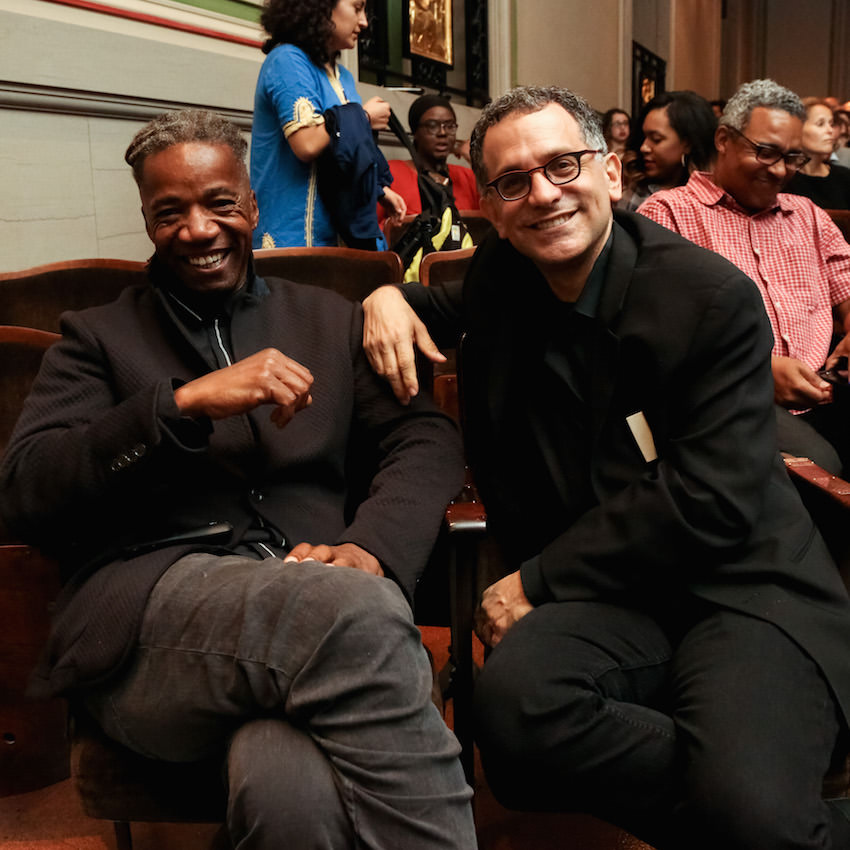
Walter Hood, Reed Kroloff
Photo by BFA
Non-profits like Recovery Park and the Detroit Riverfront Conservancy have begun to make and initiate real change to the landscape of the city. And other individuals, artists like Tyree Guyton and Lisa Waud, have created local urban oases on their own, revitalizing uninhabited lots with the Heidelberg Project and the Flower House respectively.
After focusing on artist-driven design interventions last spring, which has resulted in ongoing local projects by Theaster Gates and the Camapana brothers, this year Culture Lab Detroit looked to green design possibilities for the future.
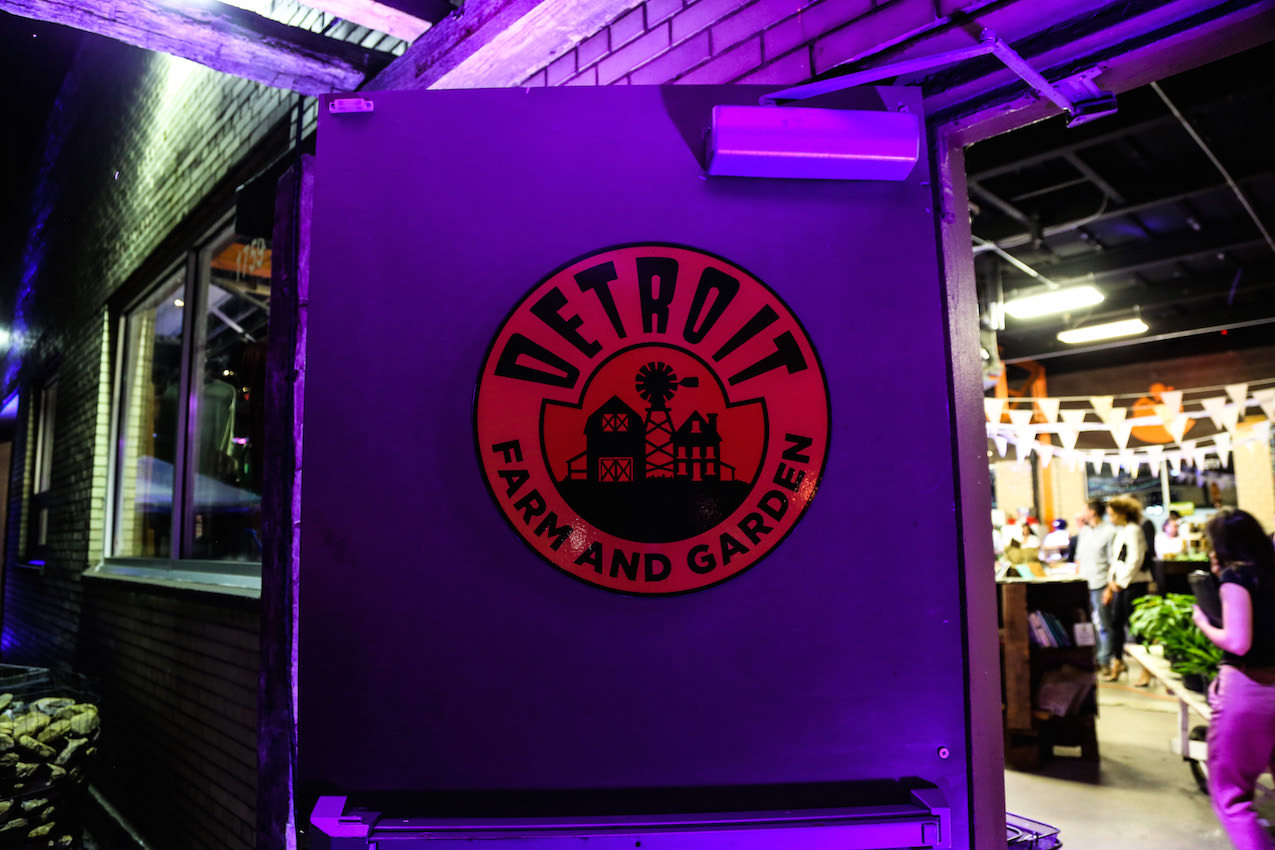
Detroit Farm and Garden-mosphere
Photo by BFA
The first dialogue, “Greening the City: The Politics and Possibilities of Green Space,” was held at the College for Creative Studies, and was moderated by Stephen Henderson of the Detroit Free Press. Chef Alice Waters (Skyping in from D.C. where she had just been presented with a National Humanities Medal of Honor from President Obama for her work with the Edible Schoolyard Project) was joined in conversation with botanist Parick Blanc (inventor of the vertical garden who has collaborated with architects like Jean Nouvel and Herzog & de Meuron), and Will Allen (former professional basketball player and urban farmer at Growing Power).
Henderson started out the conversation by commenting that Detroit residents should stop thinking about “20 square miles of empty space,” and instead about “20 square miles of green space, of opportunity.” Waters shared with the at-capacity crowd the values, confidence, experience, and culture young people gain from gardening. “I don’t see it as teaching gardening per se, but as a lab for learning art, science, and culture,” she said. Of the students in her Edible Schoolyard Project, she said, “I feel like when they graduate from eighth grade, any one of them could give a TED Talk.” Allen, having worked as an urban farmer in his community of Milwaukee for over 20 years, had this message for Detroit in regards to urban agriculture being supported at the government level: “The thing that really changed policy in Milwaukee is that we did something concrete.” His farm and facility is now visited by 30,000 people a year and trains farmers from all over the world.
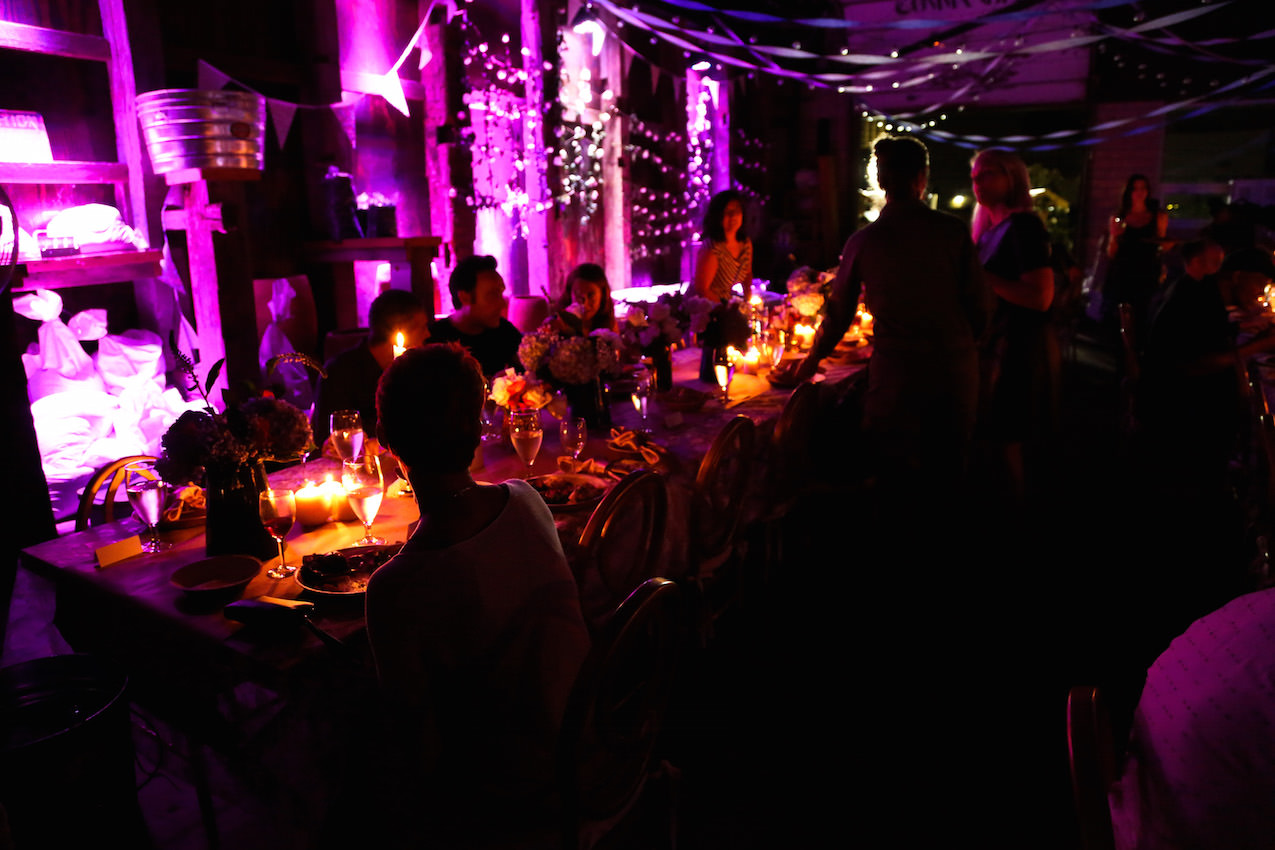
Dinner-mosphere
Photo by BFA
Later on Thursday evening, a dinner celebrating the panelists was held at a surprising location, albeit on-theme: Detroit Farm and Garden, a resource for community agriculture and landscaping – decidedly not a restaurant. Chefs from the area, like Akilah Muhammad, Brion Wong, Karim Harba, Jesse Knott, MaryBeth Carolan, and Matt Knio offered up vegetarian, vegan, raw, and (especially tasty) meat dishes.
Friday night’s conversation, “Architecture and Nature: Designing for Today’s Urban Landscape” was held at the Detroit Institute of Arts and was moderated by critic, academic, and design consultant Reed Kroloff. Architect Sou Fujimoto joined via Skype the landscape architect Walter Hood. After each presenting an overview of their recent projects – Fujimoto bringing nature into his design, and Hood designing around nature – they answered questions from the audience (again, packed to the gills). Hood encouraged people in Detroit to stop looking at nature as something to control and tame. He wondered, what happens if we let it grow and thrive, and how best do we do that in an urban environment?
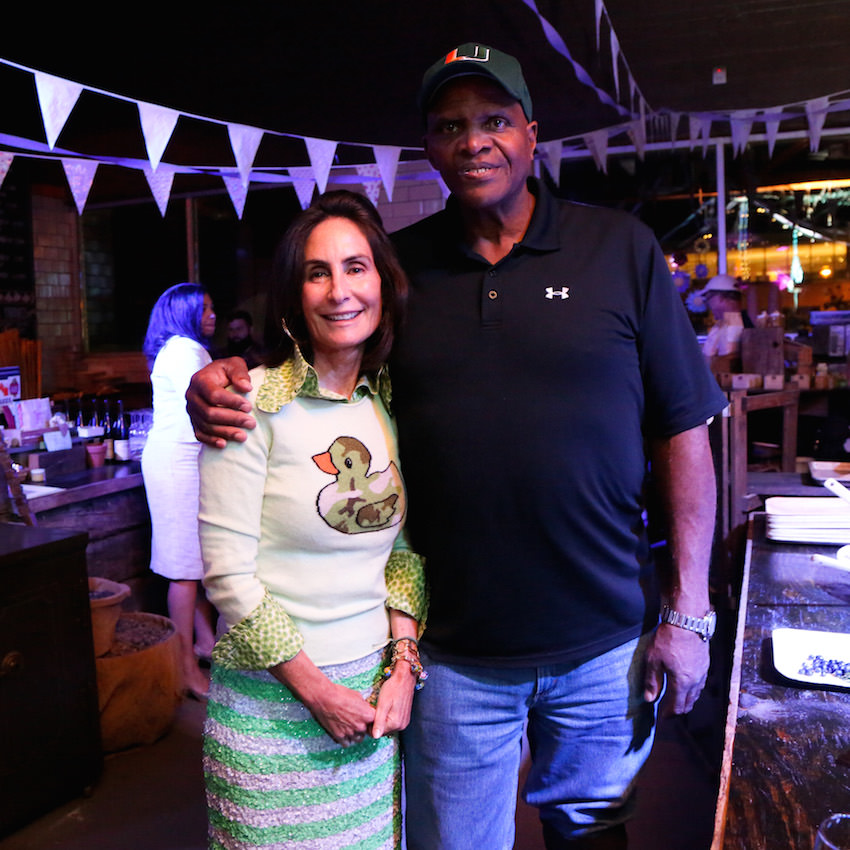
Jane Schulak, Will Allen
Photo by BFA
Schulak’s goal at Culture Lab Detroit is to connect the dots of what’s already been happening in her city for several years – between organizations, designers, and artists – and get the rest of the design world interested and involved. The annual series of dialogues are a jumping off point to real, accessible projects like Culture Lab Designs, a pop-up shop by David Stark that will sell the work of Kelly Behun, Estudio Campana, Sebastian Errazuriz, Paola Navone, and Stark, opening this October.
During Friday’s dinner honoring Hood and Fujimoto at Selden Standard, prospective plans and schemes on how to invigorate the great city of Detroit could be heard percolating around the room and across the table. While we’re not sure yet how those ideas will manifest exactly, we’re sure of one thing: there’s certainly something happening in Detroit.
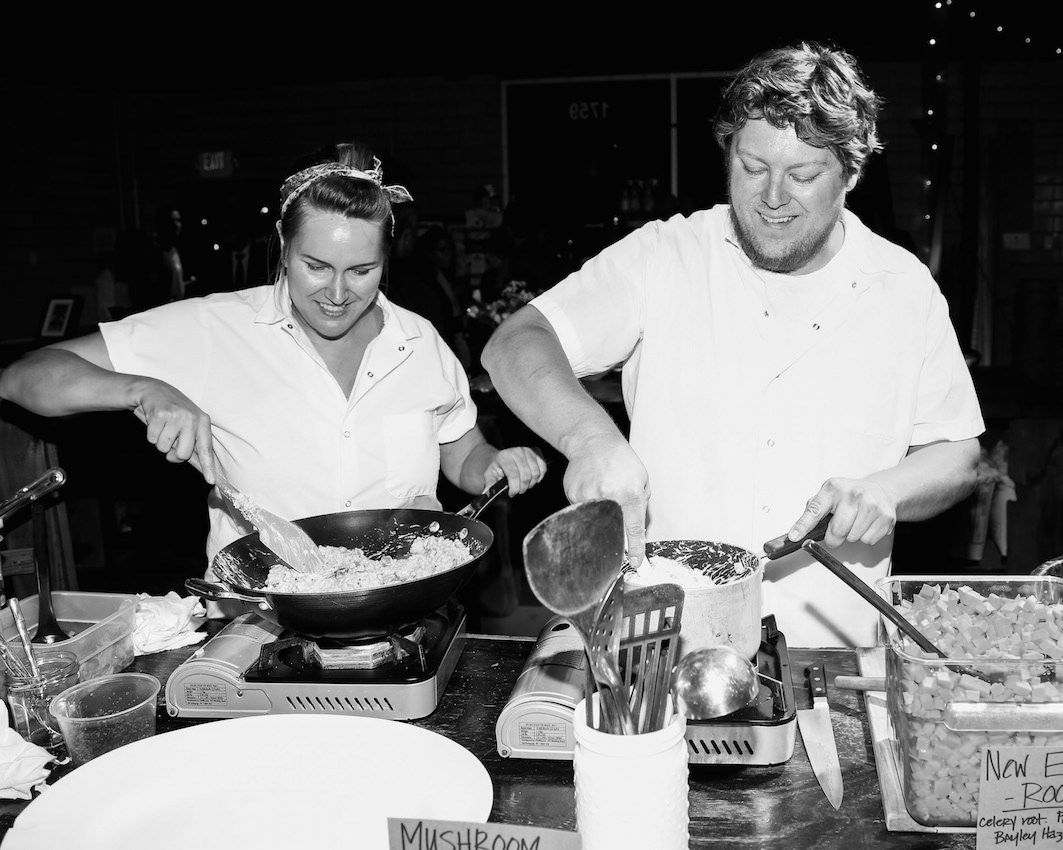
Lindsay Salminen, Jesse Knott
Photo by BFA
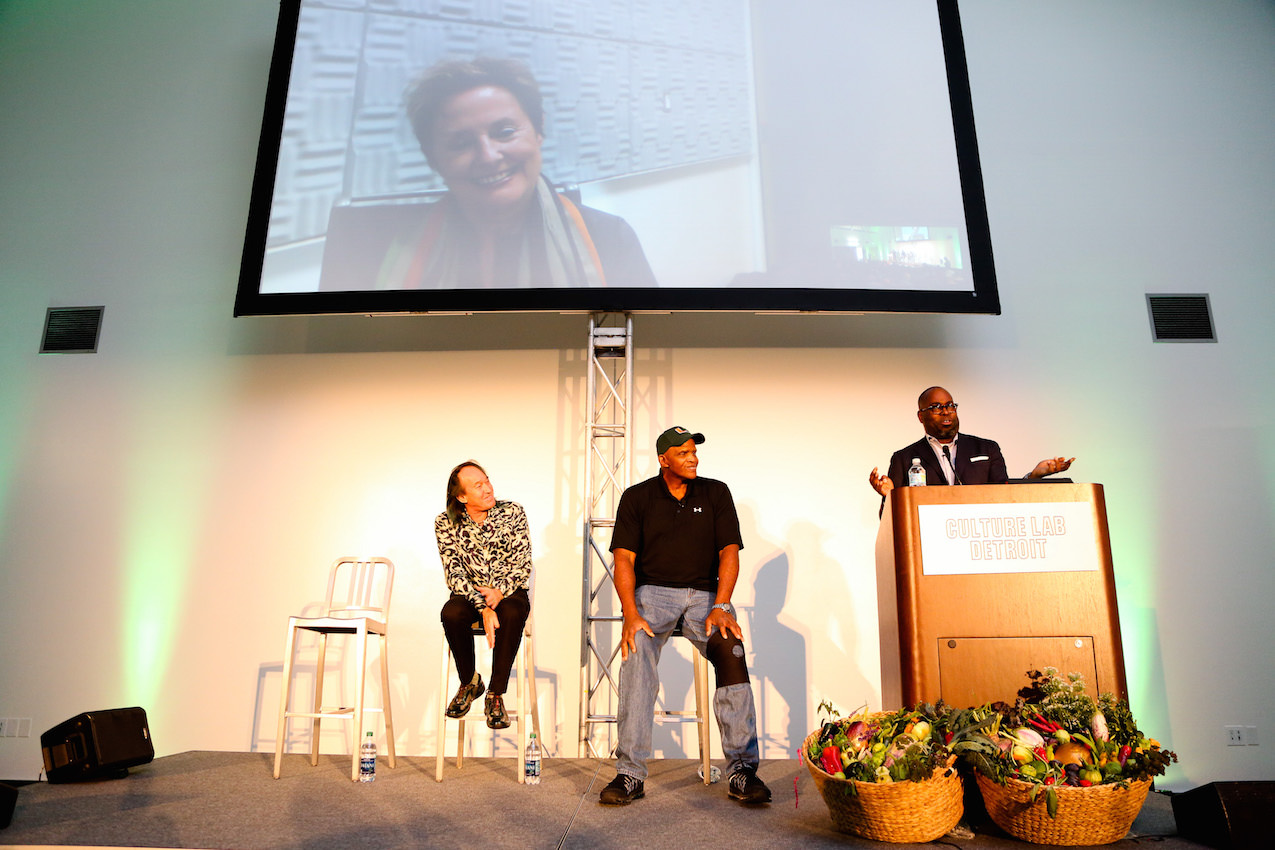
Alice Waters, Patrick Blanc, Will Allen, Stephen Henderson
Photo by BFA








